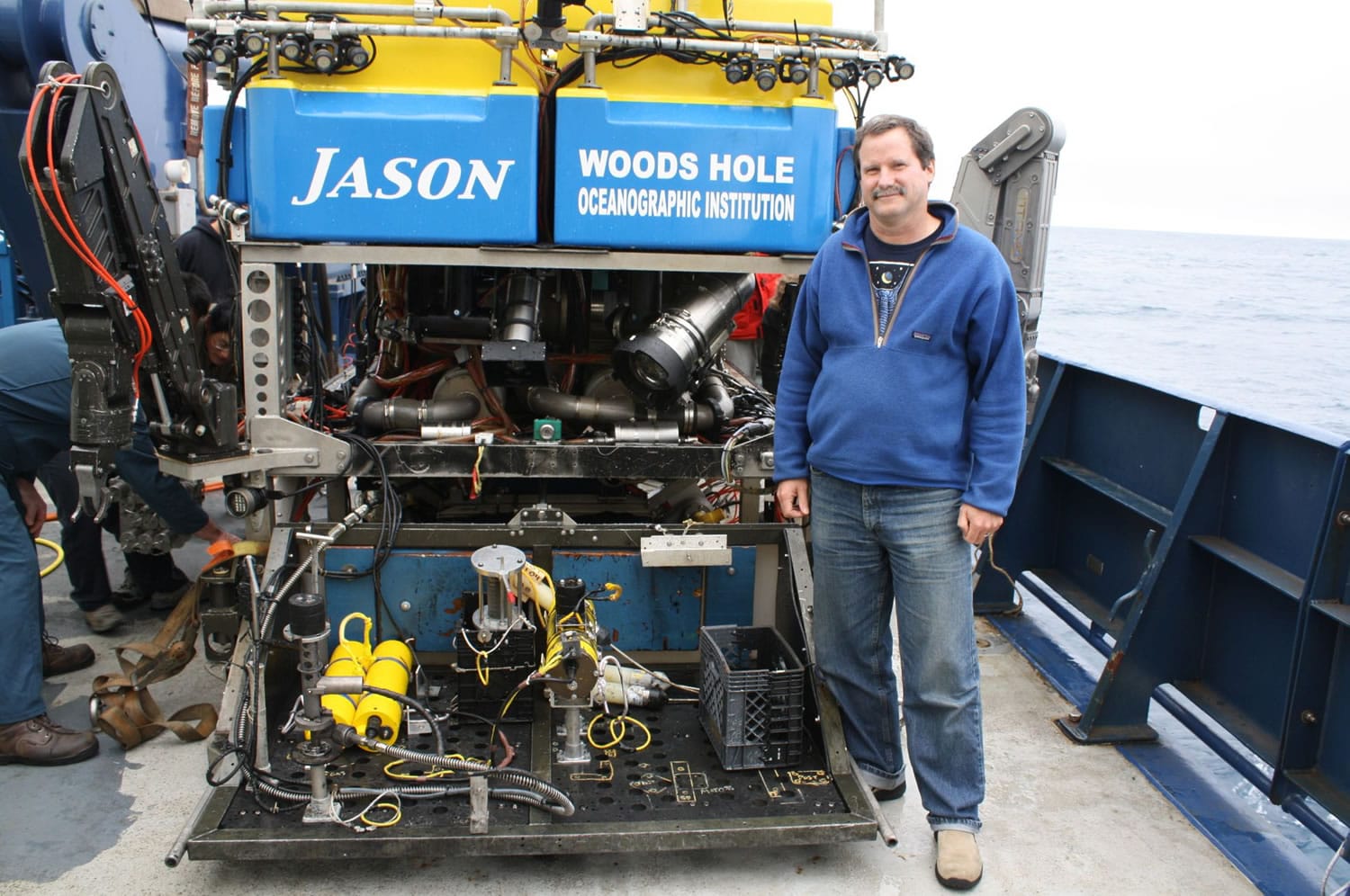A former Vancouver resident said the lessons he learned at the “University of Mount St. Helens” helped scientists achieve the first forecast of an undersea volcanic eruption.
Oregon State University geologist Bill Chadwick was part of a team that discovered the recent eruption of the Axial Seamount off the Washington-Oregon coast.
Scientists have been monitoring the undersea volcano since its previous eruption in 1998, and five years ago they wrote a paper forecasting another eruption before 2014.
That eruption happened in April.
Since it took place 250 miles west of the Columbia River’s mouth, and almost a mile below the surface of the Pacific Ocean, the eruption was not immediately evident. The scientists didn’t actually notice it until July 26, when they went looking for their monitoring equipment with the help of a remotely operated submersible vehicle known as Jason.
The sequence resembled a golfer who didn’t realize he’d just hit a hole in one. He knew he had a golf ball somewhere on the course, but didn’t realize what happened until he found the ball in the cup.
The scientists knew their volcano-monitoring gear was somewhere on the seabed; they didn’t realize it was right in the middle of the most recent Axial Seamount lava flow.
“An eruption was the last thing on my mind,” Chadwick said. “We were going back to sites we’d been to many times before. There should have been a big instrument plugged into the seafloor at a hot springs, taking samples.
“There are lots of markers, so we know where we are,” he said. However, “The seafloor looked completely different. I was going back and forth with the pilots of the remotely operated vehicle:
‘We can’t be in right place.’
‘We are in the right place.’
“We went back and forth on that for a while,” said Chadwick, who is based in Newport, Ore.
He directed the remote submersible to another nearby site, and “It looked exactly the same” as it had, Chadwick said.
“As we were moving back to the previous site, we came across the edge of new lava flow. That’s when it hit me: There has been an eruption we didn’t know about. The old site was totally repaved,” Chadwick said.
It was an unexpected payoff for a research project that had been treading water, so to speak, for 13 years. The scientists knew the seafloor had subsided more than three meters — about 10 feet — after the 1998 eruption.
“Since then, we have been measuring the gradual reinflation” as magma built up in the undersea volcano, he said. “That was the basis of the forecast — it would be ready to erupt when the seafloor had risen to the level it was in 1998.
“We kind of went out on a limb to forecast this, but it was a way to test our ideas,” Chadwick said. “It was kind of surprising, really.”
Chadwick traced the process back to his time as a Vancouver resident, from December 1980 to March 1983.
“I worked at Mount St. Helens with the U.S. Geological Survey in the 1980s,” he said. “We used to call it the University of Mount St. Helens. We learned a tremendous amount.
“After the big May 18 eruption, there were dome-building eruptions every few months. I was working as field assistant with Don Swanson. We were measuring ground movements in the crater,” Chadwick said. “The rate of movement was increasing before dome-building eruptions and the number of quakes was increasing. Those two things were very good predictive tools. I did my thesis on how that all worked.
“Once I started working on submarine volcanoes, I was trying to apply lessons from St. Helens to see if the same methods could be used. The work now is an outgrowth of that Mount St. Helens research.”
While there are similarities, there are some differences in equipment.
“As magma accumulates under a volcano, it inflates and the ground surface goes up. On land, you measure it with a GPS system or a laser,” Chadwick said. “On the seafloor, we had to come up with new techniques to measure the same thing.”
They use instruments that measure water pressure, precise enough to tell when the ocean floor has risen one centimeter.
“The inflation rate was 15 centimeters a year,” he said. “That’s pretty gradual, but over a decade, that adds up.
“During this eruption, the seafloor subsided more than two meters within a few days, probably,” Chadwick said.
The research team also is looking at how the underwater environment is responding to the recent eruption.
In addition to providing video feeds, “Jason pilots are skilled at using manipulators,” said Dave Butterfield, a chemist from the University of Washington and a lead researcher. “They can install fragile instruments, position things precisely within millimeters to take water samples. They can use brute force to break chunks of rock off.”
Using those tools, “We can track how animals come back and recolonize, and what happens to the chemical composition of hot springs,” Butterfield said.
“One of the surprises was that we found tiny tube worms already colonizing one of the vents on rock that was 3½ months old,” Butterfield said. “We had a very clear view of them while doing water sampling. We saw very small — maybe centimeter-long — tube worms had glued themselves to rock where warm water was coming out and had started to recolonize the vent.
“It’s exactly the same thing as Mount St. Helens,” Butterfield said. “But instead of trees, it’s tube worms that are coming back.”
Tom Vogt: 360-735-4558 or tom.vogt@columbian.com.




